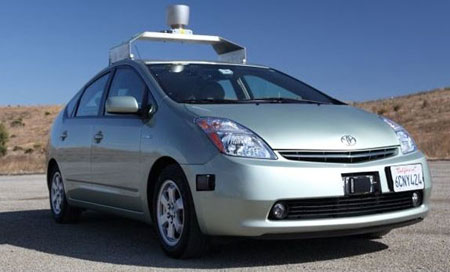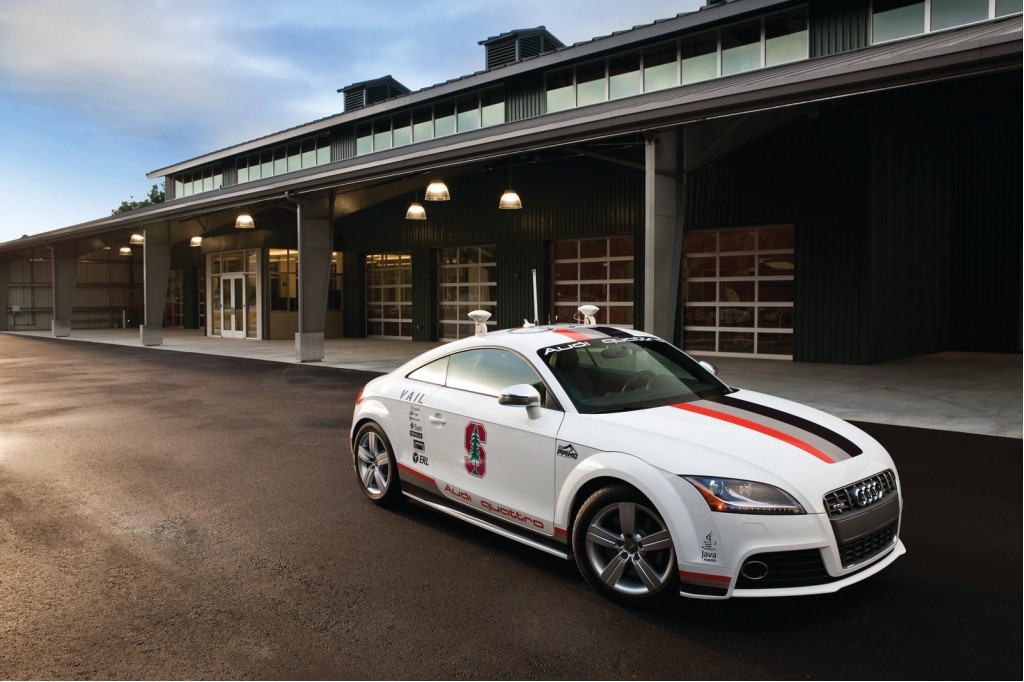
Google autonomous Toyota Prius test vehicle
Recently Google requested a waiver from lawmakers in Nevada to allow it to test its computer-driven cars on Nevada public roads. Could robotic cars be safe on everyday roads?
In the last couple of years, the Defense Advanced Research Projects Agency (DARPA) has finally seen driverless cars fully master their demanding tests of remote and even simulated city driving.
Last year, an Audi TTS challenged the incredibly demanding Pikes' Peak hill climb (12.4 miles with 156 turns) without any driver. The robotized Audi mastered the grueling climb in 27 minutes.
Though 17 minutes behind the top racers on the hill, this was still as fast as most drivers would ever hope to get up the mountain.

Stanford/Audi TTS autonomous Pikes Peak car, aka 'Shelley'
By late 2010, Google scientists had developed the technology for autonomous vehicles to the degree to begin testing on public roads in the area around Palo Alto, California.
These early test cars always had a human backup ready to take control of the car, but the test fleet accumulated thousands of miles with no accidents attributed to computer failures.
The Google program is headed by Sebastian Thrun, who had been director of the Stanford Artificial Intelligence Laboratory.
Thrun also led the Stanford team that won the second DARPA driverless car challenge and a $2 million prize, for creating a vehicle that could complete a 132-mile desert course without human intervention.
The proposal presented to the Nevada lawmakers extends this research to test on public roads this kind of automated driving systems.

Stanford/Audi TTS autonomous Pikes Peak car, aka 'Shelley'
Of course, a car that drives itself would take away the "fun" factor for the driver, but it would reduce stress in harried commuter traffic and offer the opportunity to actually get work done during the commute.
Distracted drivers cause many vehicular accidents as they talk on their cell phones, send text messages, change CDs, or even just get into heated discussions with a passenger.
The robotic car might be subject to its own potential failures, to be sure.
But would they be more frequent or more dangerous than the carnage we now experience with human drivers?
Leave us your thoughts in the Comments below.